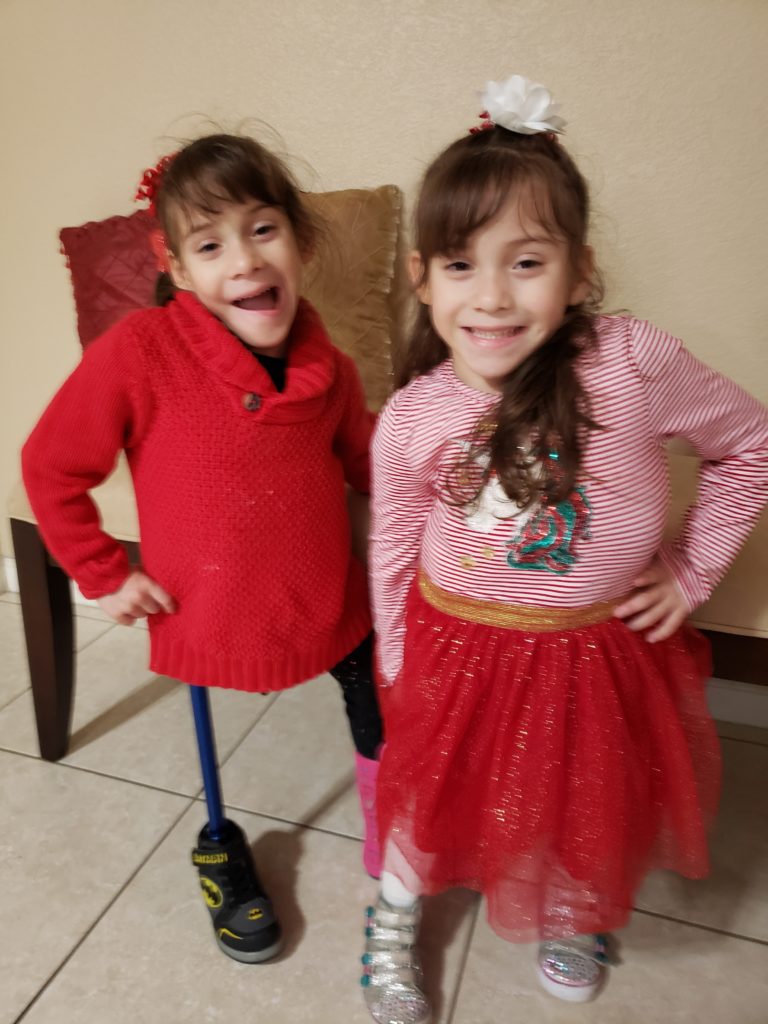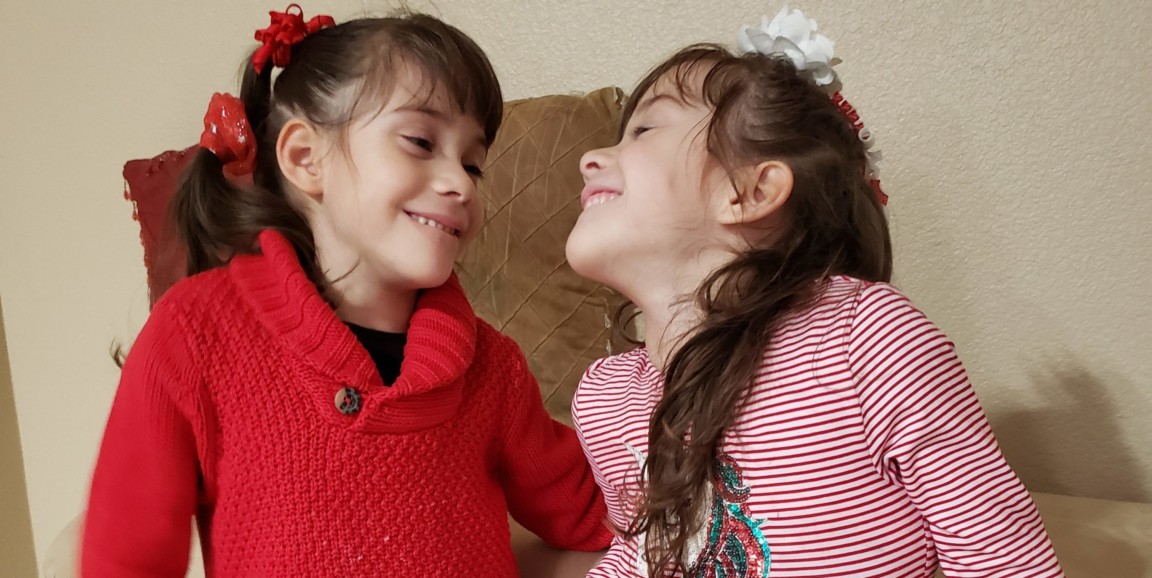Formerly conjoined twins Erika and Eva Sandoval, who were separated in a 17-hour surgery at Lucile Packard Children's Hospital Stanford in December 2016, are now lively 5-year-olds in good health who are doing well in kindergarten.
The separation of the girls, who were born at Packard Children's in 2014 and live with their parents in Antelope, Calif., was one of the top media stories of the 2010s for Stanford Children's Health.
When I called the twins' mother, Aida Sandoval, for a quick update, she put me on speaker phone. I asked what Erika and Eva like about kindergarten. They began shouting enthusiastically:

"I'm enjoying everything, just the little things," says mom Aida Sandoval.
"I like going on the slide!" said Eva.
"I like choice time!" said Erika.
"I like choice time, too!" said Eva.
They're into typical 5-year-old stuff, Aida told me: They are learning their numbers and love playing with kinetic sand, finger puppets and Barbie cars. Always talkative, the girls have also started bringing big words home from school. After a lesson about bees, they came home chattering about bee anatomy, popping out vocabulary like "abdomen" and "thorax."
"I'm in awe at the conversations they have with me sometimes," Aida said.
The separation left Eva and Erika with one leg each, and at the time their medical team was unsure how much mobility they would gain. (At first, their surgeon wasn't even sure they'd be able to sit unsupported.) They've made tremendous progress: From sitting, to using wheelchairs, to being fitted last year with custom prostheses, the twins have become very mobile.
Both girls are now getting around with a combination of prosthetic legs and walkers. With a hand to hold, they can even walk in their prostheses without the walkers. The long-term goal is to transition them to using their prostheses with walking sticks for balance and support.
"Erika loves to get her prosthetic on and walk around the house," Aida said. "I can picture how she'll be doing it on her own as she gets older." It's a very positive change from the girls' infancy, when there was much more uncertainty about their futures.
Eva and Erika enjoy seeing photos of themselves from when they were tiny, and love to hear the stories their parents tell about what life was like before they were separated.
"When I see the pictures, I can't believe we were there," Aida said. "It still amazes me to see them at this point in their lives."
Photos courtesy of the Sandoval family




